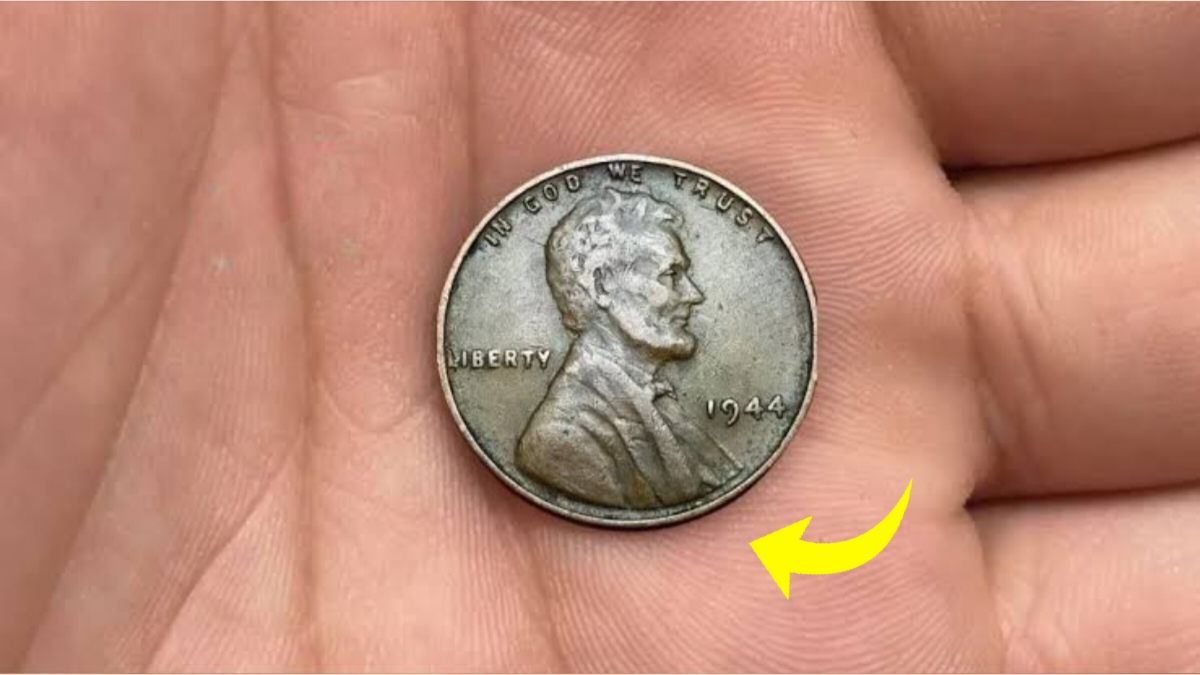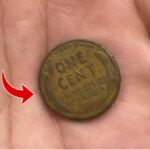Lincoln Wheat Penny Valued at $5.2 Million: In a world where coins usually go unnoticed, the Lincoln Wheat Penny from a bygone era is making headlines again—this time with an eye-popping value of $5.2 million. This particular coin, minted under unusual circumstances, is so rare that only a few are believed to exist today. What’s even more intriguing is the possibility that one or more of these high-value pennies could still be in everyday circulation. Originally designed for practicality, this one-cent piece now commands a price that rivals luxury cars and real estate. With renewed public interest in rare coins, collectors and curious spenders alike are checking their pockets, drawers, and jars in hopes of discovering this historical treasure. Could a life-changing coin be hiding in plain sight among your spare change? Here’s a deeper look into the coin’s backstory, what makes it so valuable, and how you might recognize one.
A Rare Coin Born Out of Minting Anomalies
The Lincoln Wheat Penny valued at $5.2 million didn’t earn its worth simply by age—it’s the result of extraordinary minting conditions. While the Lincoln Wheat series ran from 1909 to 1958, certain years and variations stand out due to errors, misprints, or limited runs. In this case, the penny in question is believed to be a rare minting mistake or an experimental strike that slipped through official processes. Some experts point to specific years, like 1943 or 1944, when steel and bronze compositions were in flux due to World War II. These changes sometimes resulted in pennies being struck on the wrong metal planchet, making them extremely rare. With only a few examples authenticated by grading authorities like PCGS and NGC, their scarcity drives their astronomical value. It’s the kind of minting fluke that transforms a one-cent coin into a multi-million-dollar collectible.
What Makes This Lincoln Penny Worth $5.2 Million
The astonishing $5.2 million price tag attached to this Lincoln Wheat Penny isn’t just hype—it reflects a combination of extreme rarity, pristine condition, and collector demand. What sets this coin apart is not just its metal composition but the story behind its creation. If it’s a 1943 bronze penny or a 1944 steel cent, these were never meant to exist in circulation. Their accidental production during wartime, combined with their near non-existence today, gives them legendary status among numismatists. Additionally, coins that remain in uncirculated or mint state condition are exponentially more valuable. When one of these anomalies appears at auction, wealthy collectors compete fiercely, sometimes pushing bids into the multi-million-dollar range. These coins aren’t just pieces of currency—they’re artifacts of American history. That heritage, rarity, and pristine state all combine to explain how something once worth a cent can now command a fortune.
Could This Million-Dollar Penny Be in Your Pocket
As unlikely as it sounds, yes—there’s a slim chance that this Lincoln Wheat Penny could still be hiding in your loose change. Most people don’t examine their pennies closely, especially older ones that seem worn or unremarkable. But for coin enthusiasts and eagle-eyed spenders, any wheat-backed penny found in circulation should raise curiosity. Look for mint years like 1943 or 1944, then check the metal. A 1943 penny made of bronze or a 1944 penny made of steel would be a huge red flag—in a good way. Weighing the coin or using a magnet can help reveal these anomalies, but professional verification is key. Despite the odds, stories have surfaced of people discovering these rare coins in old jars, inherited collections, or even in everyday change. With the right combination of luck and awareness, it’s not entirely impossible for this million-dollar penny to resurface in modern circulation.
Other Lincoln Wheat Pennies Worth Tracking Down
While the $5.2 million Lincoln Wheat Penny is the crown jewel, other variations in the same series are also worth a small fortune. Take the 1909-S VDB penny, for example—valued at thousands due to its limited mintage and controversial initials. The 1914-D penny is another big hitter, especially in high grades. Errors like the 1922 “No D” penny, caused by a worn die, are also valuable and heavily sought after. Even some common-date Wheat Pennies can bring impressive prices if they’re in mint state condition. Collectors pay top dollar for coins with unique characteristics such as doubled dies, off-center strikes, or repunched mint marks. Each variety tells a story of its own, making the Lincoln Wheat series one of the most studied and beloved collections in American numismatics. So, even if you don’t find the $5.2 million prize, your old penny jar might still hide something worth bragging about.
Coin Collecting in America: A Growing Treasure Hunt
The resurgence of interest in rare coins, especially legendary ones like the $5.2 million Lincoln Penny, has given new life to the coin collecting world. Social media, viral videos, and reality TV have introduced younger generations to numismatics in an engaging way. Coin collecting is no longer just a hobby for retirees—it’s now seen as a blend of history, investment, and adventure. Apps and online communities allow enthusiasts to share finds and tips instantly, turning every pocket full of change into a potential jackpot. As inflation rises and digital payments grow, physical coins might seem less relevant—yet the nostalgia and thrill of the hunt continue to thrive. For some, it’s about preserving a piece of American history; for others, it’s the hope of finding that one coin that could change everything. Either way, coin collecting is clearly here to stay—and growing stronger than ever.
Disclaimer
This article is intended for informational and educational purposes only. It does not constitute financial or investment advice. The valuation of rare coins such as the Lincoln Wheat Penny mentioned here is based on historical sales data, expert estimates, and collector demand at the time of writing. Prices can vary significantly depending on a coin’s condition, certification, and market interest. Readers should understand that while rare coins sometimes resurface in general circulation, the likelihood is very low. Anyone suspecting they possess a valuable coin should consult a certified numismatist or professional grading service like PCGS or NGC. This article is not affiliated with any government mint or official numismatic institution. Always perform your own research before buying, selling, or investing in rare coins or collectibles. All examples mentioned are provided for general awareness and should not be interpreted as guaranteed opportunities or financial endorsements.



